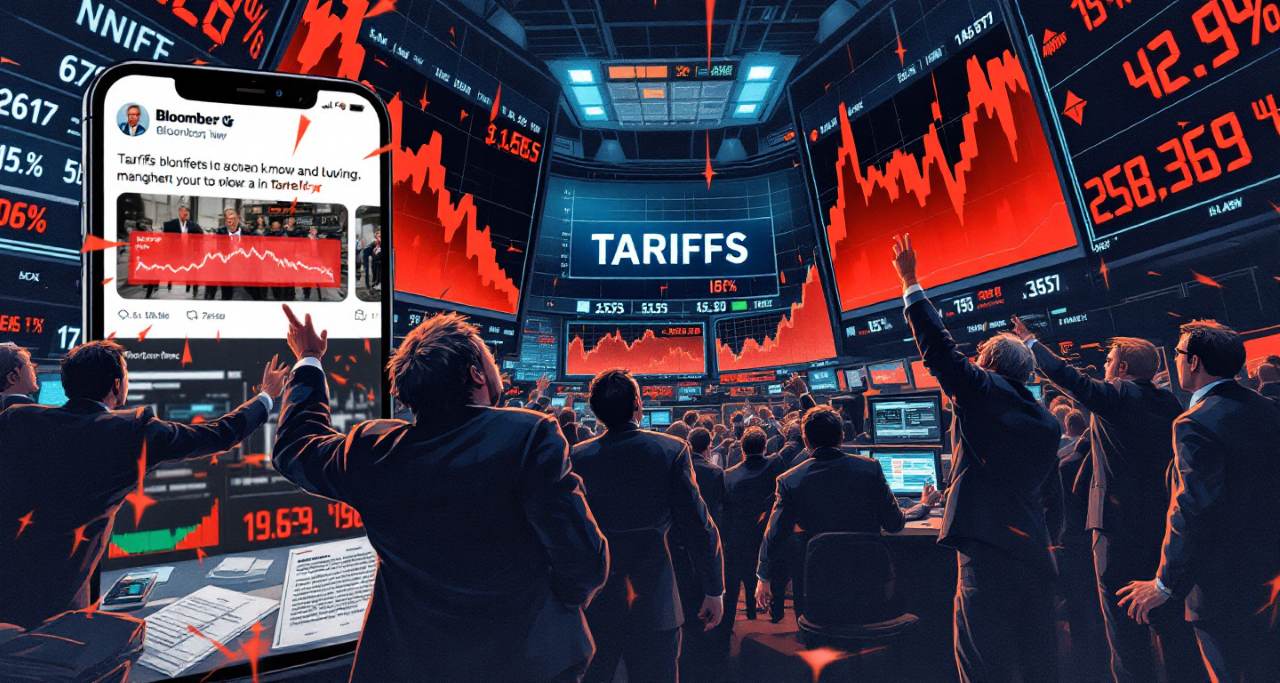
In a dramatic turn of events, U.S. financial markets experienced wild swings today after a fake tweet, falsely attributed to Bloomberg, claimed that the Trump administration was considering a 90-day pause on tariffs.
The unverified report, which originated from an anonymous account on X (formerly Twitter) named “Walter Bloomberg,” sent shockwaves through the stock market, briefly rallying major indices before the rumor was debunked.
The tweet, which gained rapid traction, suggested that President Trump was rethinking his aggressive tariff policies, a move that many investors interpreted as a potential easing of trade tensions. However, the White House quickly dismissed the claim as “fake news,” with officials reiterating that no such policy change was under consideration.
A $4 Trillion Swing
The impact of the false report was immediate and profound. According to Fortune, the Dow Jones Industrial Average surged by over 600 points within minutes of the tweet’s circulation, only to plummet back to its previous levels once the rumor was debunked. Analysts estimate that the brief rally and subsequent sell-off moved nearly $4 trillion in market value, underscoring the fragility of investor sentiment in the current economic climate.
The incident highlights the precarious state of global markets, which have been battered by months of uncertainty surrounding U.S. trade policy. “This is a clear example of how desperate investors are for any sign of relief,” said a senior market strategist at a leading investment firm. “The fact that a single tweet, with no credible source, could move markets this much is both alarming and telling.”
The Role of Social Media in Market Volatility
The fake tweet also raises serious questions about the role of social media in influencing financial markets. Platforms like X have become a double-edged sword for investors, offering real-time information but also serving as a breeding ground for misinformation. The account “Walter Bloomberg,” which has no affiliation with Bloomberg News, has been known to post market-related updates, but this incident marks a significant escalation in the potential for harm.
In response to the incident, Bloomberg News issued a statement clarifying that it had no connection to the tweet and condemning the misuse of its brand. Meanwhile, the Securities and Exchange Commission (SEC) is reportedly investigating the origins of the tweet and whether it constitutes market manipulation.
A Broader Reflection of Market Anxiety
The market’s reaction to the fake tweet is emblematic of a broader anxiety among investors. As Axios reported, the wild swings in stock prices reflect a deep yearning for stability amid ongoing trade disputes and economic uncertainty. With President Trump’s tariff policies continuing to dominate headlines, any hint of a policy shift—real or imagined—has the potential to send markets into a frenzy.
The White House, for its part, has sought to downplay the incident. In a press briefing, a spokesperson dismissed the tweet as “nonsense” and reiterated the administration’s commitment to its current trade strategy. However, the damage to market confidence may take longer to repair.
Lessons for Investors
For investors, today’s events serve as a stark reminder of the risks posed by misinformation in the digital age. As markets become increasingly sensitive to news—both real and fake—due diligence and critical thinking are more important than ever. Experts recommend relying on verified sources and exercising caution before making investment decisions based on social media posts.
In the end, the fake Bloomberg tweet may be a fleeting moment in the broader narrative of U.S. trade policy, but its implications for market stability and the role of social media in financial decision-making are likely to linger. As one analyst put it, “This isn’t just about a single tweet. It’s about the vulnerability of a system that can be so easily shaken by a few words on a screen.”
